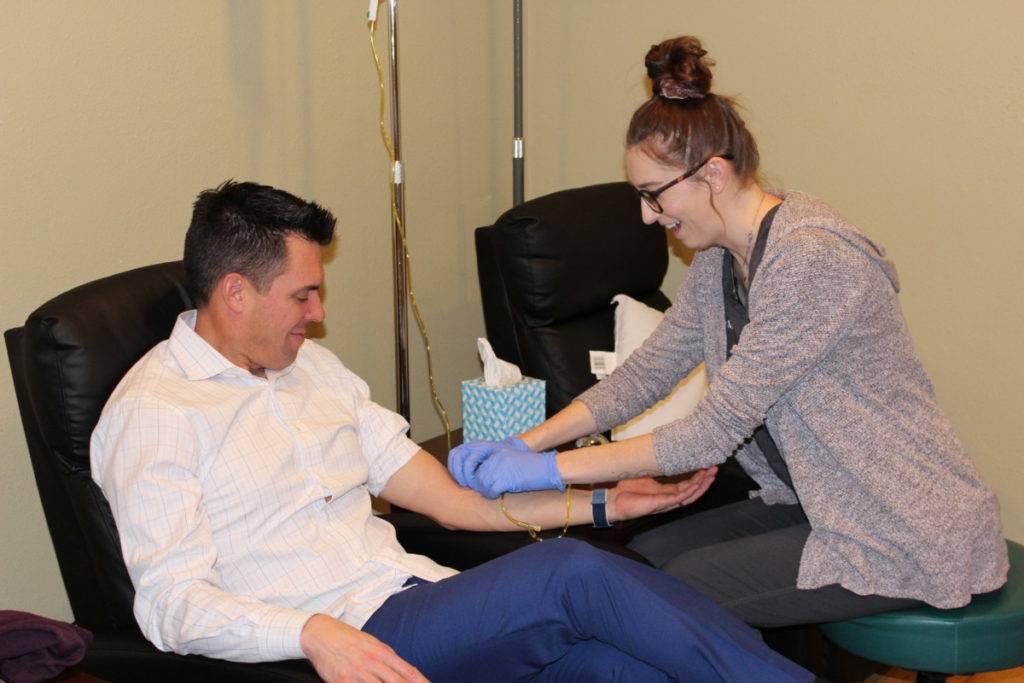EDTA Chelation Therapy for Coronary Artery Disease and Heart Disease

There is good scientific evidence the lead [i] and mercury [ii] can cause atherosclerosis. A recent review article published in the Journal of the American heart association[iii] sheds a positive light on EDTA chelation therapy for patients with cardiovascular disease. [1] In the most comprehensive systemic review and meta-analysis to date, Ravalli et. al evaluated 24 published studies on EDTA chelation.
This article is noteworthy because it’s the largest review to date including 15 before and after chelation clinical trials and five retrospective case series. The effect of EDTA was also factored in to determine if the clinical effects of EDTA are more pronounced in patients with existing diabetes and arterial disease. The authors concluded that EDTA chelation can eliminate the toxic metals that are associated with inflammatory oxidative damage to the artery wall and atherosclerosis.
Just as in other studies they found that chelation had more benefit for patients with comorbidities. Comorbidities are conditions that increase risk of heart attack and stroke such as diabetes and peripheral arterial disease. The higher your risk the greater the benefit from chelation.
How Chelation Therapy Works for Heart Disease
The main way chelation works for heart disease is through removing toxic metals out of the arterial wall where they cause: DNA damage, oxidative stress, and inflammation. [iv] Chelation means to “bind to” and thus allow for excretion through to urinary and digestive tract. This is the way toxic metals are detoxified.
In 2021 a review article[v] the various ways toxic metals disrupt health was clarified. They examined how heavy metals cause a variety of damage to body tissues and organs. [2] Heavy metals damage cells, specifically disrupting cell growth, activity, and repair. In their review they summarize how toxic metals induce ROS[3] generation, weakening of the antioxidant defense, enzyme inactivation, and oxidative stress. These metals also damage DNA, leading to many more problems including cancer. Some metals also bind to specific molecules, blocking chemical reactions.
It’s no surprise then that the National Institutes of Health (NIH) is paying for human studies on chelation for heart disease. [vi] Peer review articles have been concluding this for years. [vii] [viii] There is no need in mammals for toxic metals such as lead, mercury, cadmium, and arsenic.
Tests Prior to Chelation Therapy
Before starting chelation for heart disease, a body burden of toxic metal should be performed by a qualified provider. The gold standard test for metals is somethings called provoked challenge. In this test EDTA and DMPS is given via IV and urine is collected over a six-hour period following the IV EDTA/DMPS. I have been performing this test for 21 years with no adverse side effects other than headache and fatigue, which typically last 24 hours.
If chelation has been shown to lower risk of heart attack why isn’t it covered by insurance? Doctors are not trained in chelation and insurance companies do not want to add to their expenses. These are important reasons, but I think that chelation for coronary artery disease will eventually be covered.
[1] Heart disease is a broad term but is mainly used to describe atherosclerosis/plaque, coronary artery disease. They essentially mean the same thing.
[2] The classic heavy metals are cadmium, lead and mercury. Other metals can be toxic too but are not “heavy.” These include arsenic, aluminum, nickel, cobalt, iron, copper, beryllium and many more.
[3] ROS= reactive oxygen species= oxidative stress and depletion of antioxidants=artery inflammation
[i] Ferreira G, Santander A, Chavarría L, Cardozo R, Savio F, Sobrevia L, Nicolson GL. Functional consequences of lead and mercury exposomes in the heart. Mol Aspects Med. 2022 Oct;87:101048. doi: 10.1016/j.mam.2021.101048. Epub 2021 Nov 14. PMID: 34785060.
[ii] Farkhondeh T, Afshari R, Mehrpour O, Samarghandian S. Mercury and Atherosclerosis: Cell Biology, Pathophysiology, and Epidemiological Studies. Biol Trace Elem Res. 2020 Jul;196(1):27-36. doi: 10.1007/s12011-019-01899-w. Epub 2019 Sep 16. PMID: 31529242.
[iii] Ravalli F, Vela Parada X, Ujueta F, Pinotti R, Anstrom KJ, Lamas GA, Navas-Acien A. Chelation Therapy in Patients With Cardiovascular Disease: A Systematic Review. J Am Heart Assoc. 2022 Mar 15;11(6):e024648. doi: 10.1161/JAHA.121.024648. Epub 2022 Mar 1. PMID: 35229619; PMCID: PMC9075296.
[iv] Valko M, Morris H, Cronin MT. Metals, toxicity and oxidative stress. Curr Med Chem. 2005;12(10):1161-208. doi: 10.2174/0929867053764635. PMID: 15892631.
[v] Balali-Mood M, Naseri K, Tahergorabi Z, Khazdair MR, Sadeghi M. Toxic Mechanisms of Five Heavy Metals: Mercury, Lead, Chromium, Cadmium, and Arsenic. Front Pharmacol. 2021 Apr 13;12:643972. doi: 10.3389/fphar.2021.643972. PMID: 33927623; PMCID: PMC8078867.
[vi] Escolar E, Ujueta F, Kim H, Mark DB, Boineau R, Nahin RL, Goertz C, Lee KL, Anstrom KJ, Lamas GA. Possible differential benefits of edetate disodium in post-myocardial infarction patients with diabetes treated with different hypoglycemic strategies in the Trial to Assess Chelation Therapy (TACT). J Diabetes Complications. 2020 Aug;34(8):107616. doi: 10.1016/j.jdiacomp.2020.107616. Epub 2020 May 7. PMID: 32446881; PMCID: PMC9434823.
[vii] Lamas GA, Issa OM. Edetate Disodium-Based Treatment for Secondary Prevention in Post-Myocardial Infarction Patients. Curr Cardiol Rep. 2016 Feb;18(2):20. doi: 10.1007/s11886-015-0690-9. PMID: 26797807.
[viii] Lamas GA, Issa OM. Edetate Disodium-Based Treatment for Secondary Prevention in Post-Myocardial Infarction Patients. Curr Cardiol Rep. 2016 Feb;18(2):20. doi: 10.1007/s11886-015-0690-9. PMID: 26797807.

